Chemnitz is probably the most overlooked city in Saxony. But there are not only many Chemnitz sights. The city offers almost endless highlights if you are interested in certain topics. But even for a fleeting visit, Chemnitz Germany definitely offers some charming sights. Here we present the top 10 Chemnitz sights. If you click here, you’ll get to our overview of the most beautiful GDR buildings in Chemnitz.
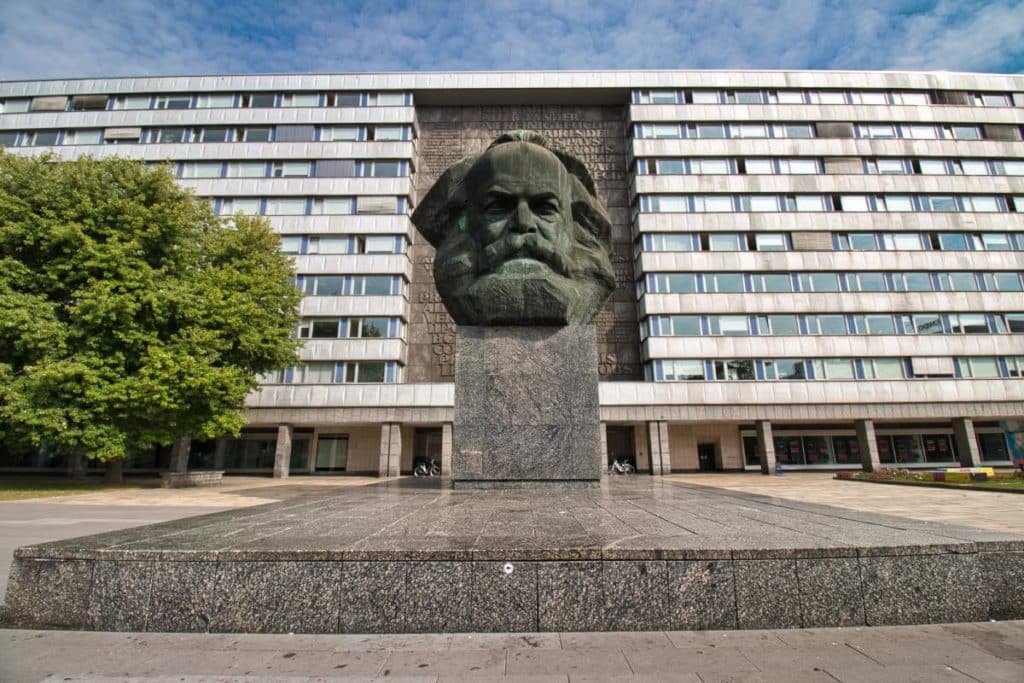
Nischl – The Karl Marx Monument
It is probably the best-known monument to Karl Marx in the former GDR and is representative of all monuments from the GDR era in East Germany. The people of Chemnitz love their Nischl – the Saxon word for head. And this head is almost a record holder: namely, it is the second largest portrait bust in the world – after Lenin’s head in Ulan-Ude. But it’s only 60cm (alright, Chemnitz, how about a bigger plinth?). The work by Soviet artist Lev Kerbel was inaugurated in 1971. Together with the relief with the motto of Marx’s Communist Manifesto “Proletarians of all countries unite”, it used to decorate the building of the Chemnitz District Council. You can read more about this in our article Karl-Marx-Stadt – What’s left of GDR Chemnitz.
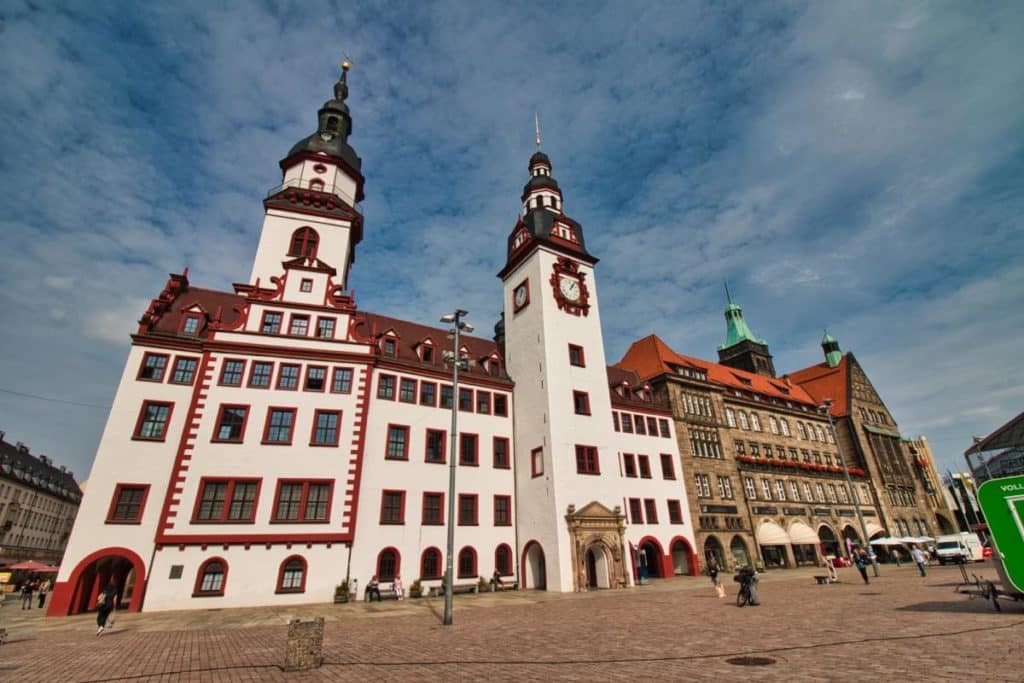
Chemnitz City Hall
In other cities there is only one town hall, but in Chemnitz there are two. Because the people of Chemnitz didn’t just tear down their old town hall. They built the New Town Hall right next to it. That’s why you can admire both right next to each other today. The Old Town Hall was built in the 15th century, more than four centuries before the New Town Hall. In the New Town Hall there is a mural by the painter Max Klinger. The best way to climb the tower of the town hall is on a guided tour!
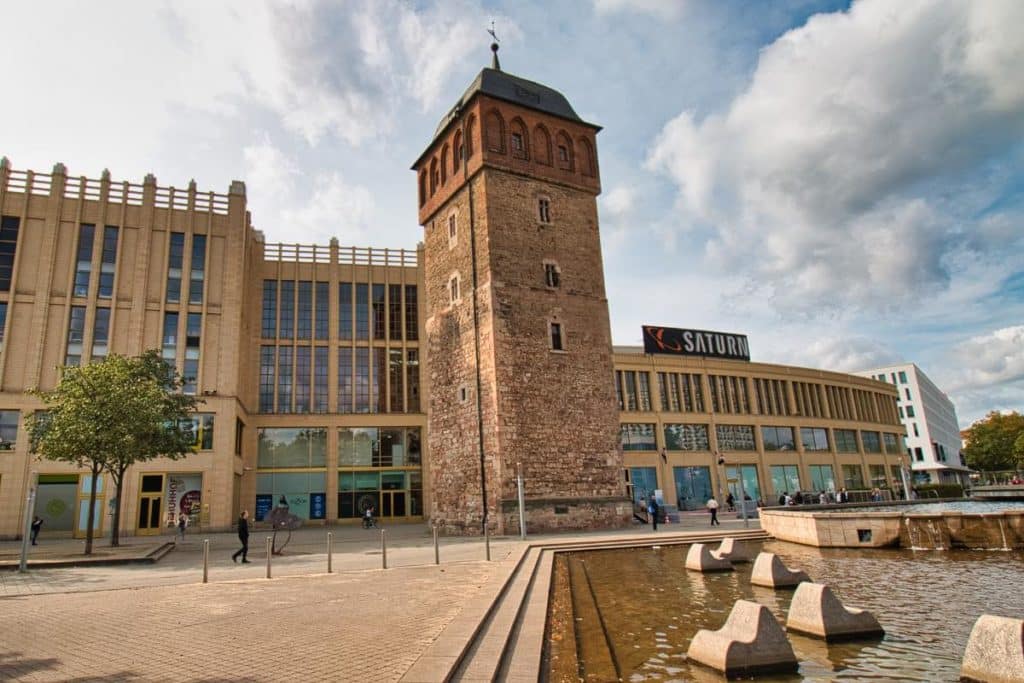
Red Tower
Speaking of the tower: For many Chemnitz residents, the actual landmark of the city is not the Nischel, but the Red Tower (“Roter Turm”). It dates back to the 13th century and is the oldest preserved building in the city. It was destroyed by bombing during the Second World War and was not rebuilt until the end of the 1950s. Incidentally, it is also connected to the GDR in another way, as its shape inspired the makers of the bottle of the dishwashing liquid Fit, which was the common dishwashing concentrate in the GDR. Fit was produced in what was then Karl-Marx-Stadt until 1967.
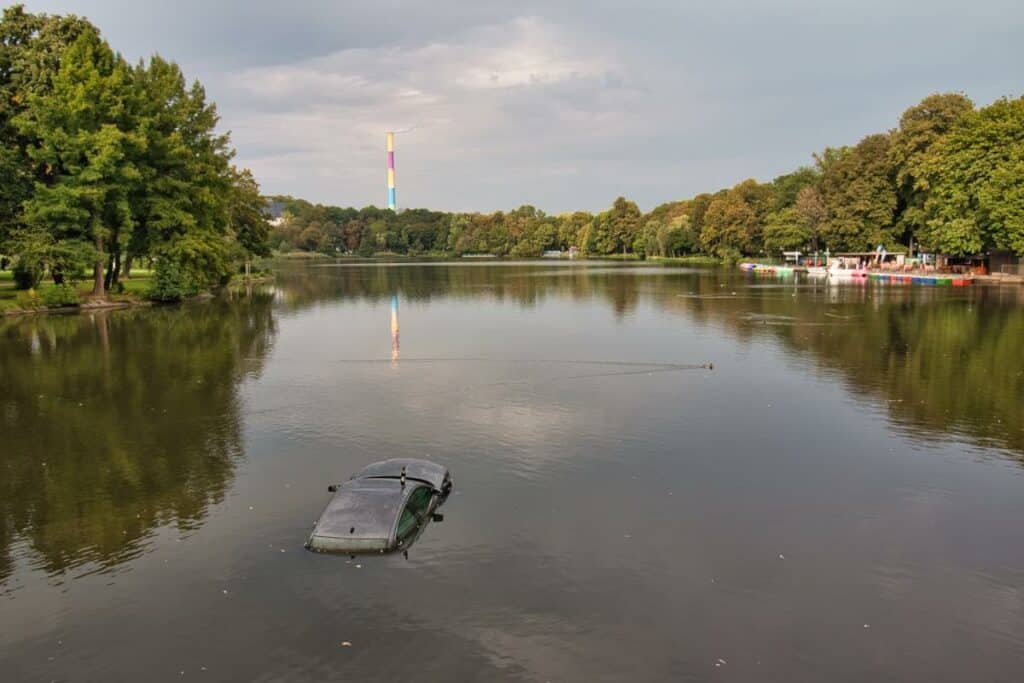
Castle and castle pond
The monastery of St. Mary was founded in 1136. It existed for around 400 years until it was dissolved as a result of the Reformation and converted into a summer residence of Prince Elector Moritz of Saxony. In the 19th century, the town museum was established here, and it still exists today. The castle pond was once used as the monastery’s fish pond. Here you can rent a boat and admire a curious work of art: a sunken car. It looks like an accident, but it is the work of the Swiss artist Roman Signer. Not all Chemnitz residents like it, as a Google rating shows: “I went for a run some time ago and almost called the police. Even considered jumping in to give 1st aid! What’s the art in that, please?”
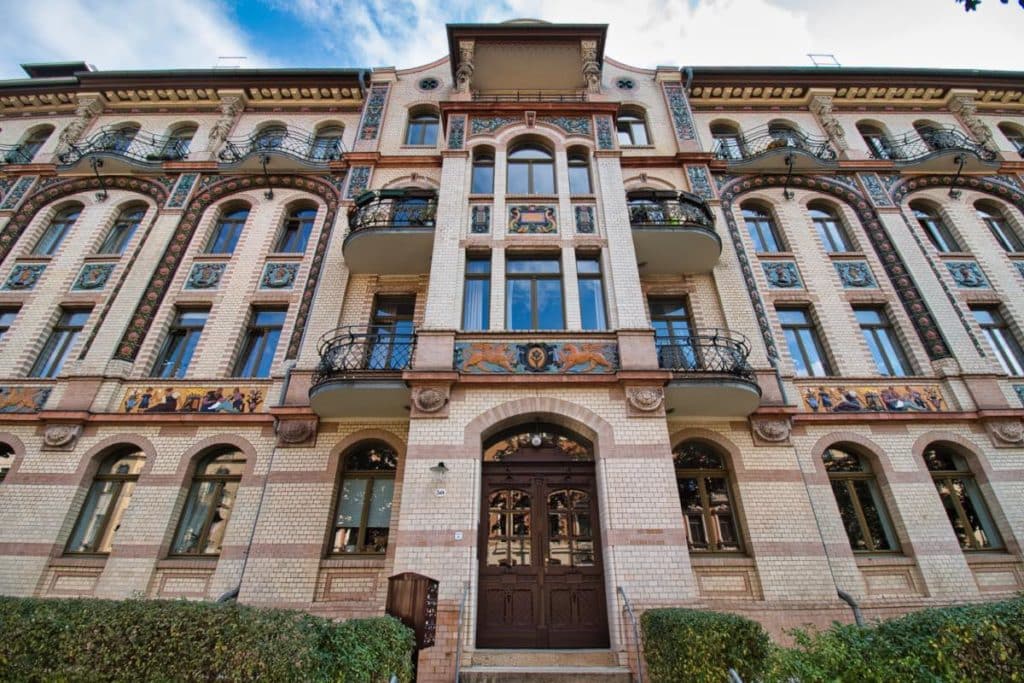
Kaßberg
As the industrialisation progressed, more and more factories were built in Chemnitz. This increased air pollution and the upper classes of Chemnitz wanted to move to an area with better air. Thus a new settlement was built on the Kaßberg and with it one of the most beautiful quarters with houses from the Wilhelminian and Art Nouveau periods. Particularly worth seeing on a walk are the Majolica houses (Barbarossa-Straße 48-52), the Kyffhäuser castle (Hübschmannstraße 19) and the fairytale houses (Gustav-Adolf-Straße 23-25).
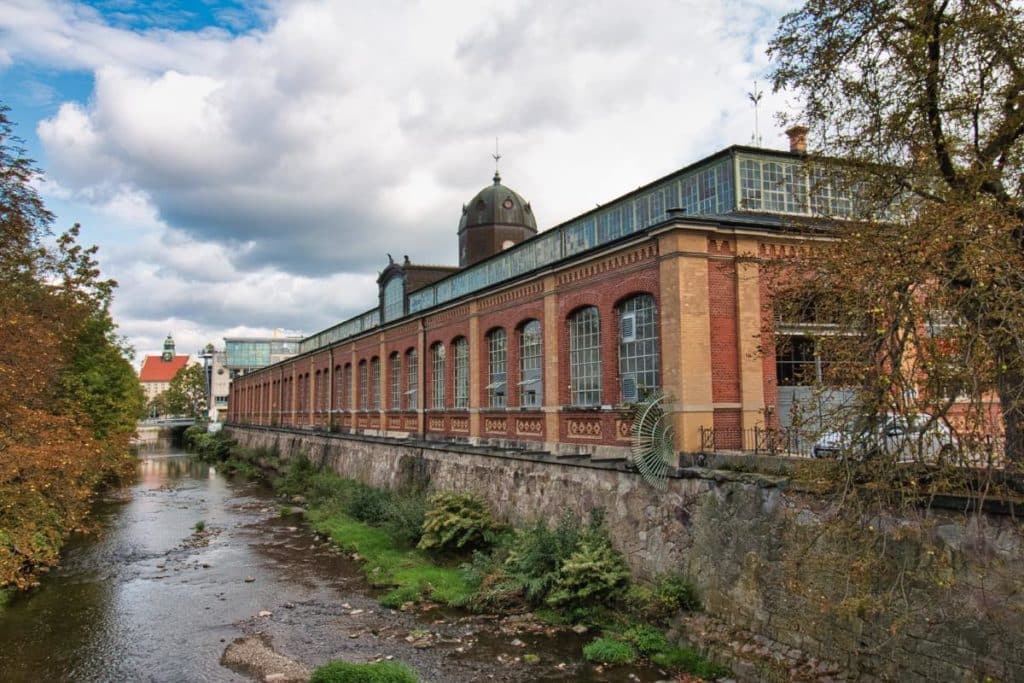
Vaults and Beer Bridge
The vaults were originally built as storage facilities under the Kaßberg. This is where beer was primarily brewed and stored. That’s why the bridge over the Chemnitz River next to the vaulted passageways is still called the Beer Bridge (“Bierbrücke”) today. From here you have a nice view of the Chemnitz market hall next door, which is now largely occupied by a bicycle shop. During the Second World War, the vaulted passageways were used as air-raid shelters, saving the lives of many Chemnitz residents. Today, the corridors can be visited on guided tours.
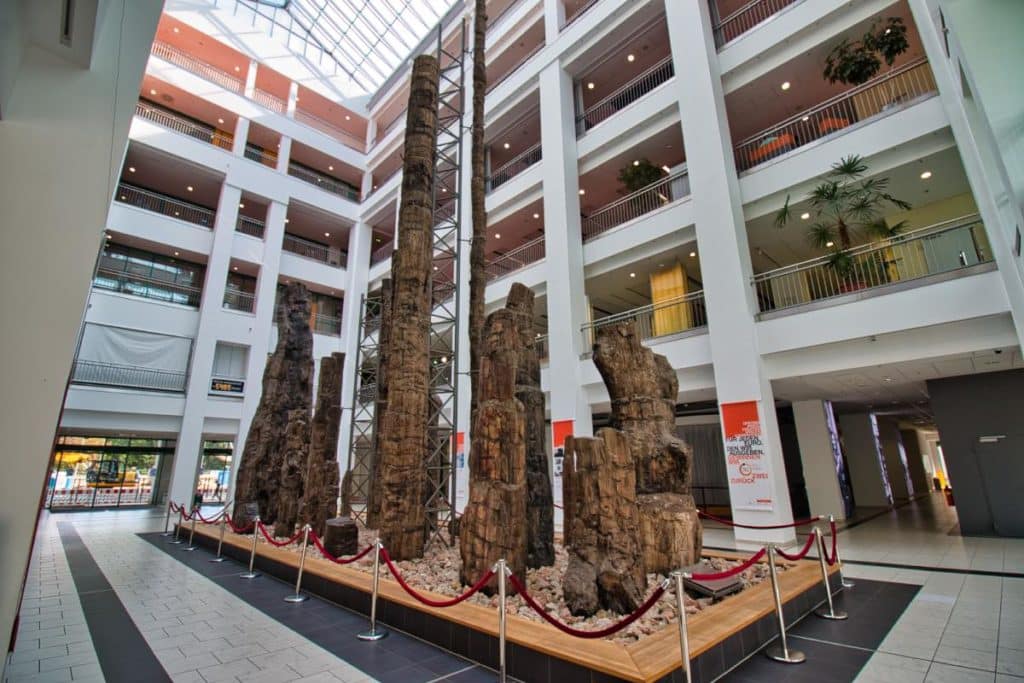
Kaufhaus Tietz and the Stone Forest
The Tietz was built in 1912/1913 according to plans by Wilhelm Kreis, who also designed the Hygiene Museum in Dresden and the railway station in Meißen, among others. It was one of the most important department stores in the city. The Jewish owners were expropriated during the Nazi era and the Tietz director from Chemnitz, Hermann Fürstenheim, was even the first victim to be murdered by the Nazis during the November pogroms. The department stores was destroyed during the war and only rebuilt by the GDR government in the 1960s. It then served as a Centrum department stores until it was closed in 2004 and converted into a cultural venue.
The Kulturkaufhaus DAStietz
Today it houses parts of the city library, the Volkshochschule (adult education centre), the Museum für Naturkunde (Museum of Natural History), the Neue Sächsische Galerie (New Saxon Gallery) as well as some shops and cafés. In the atrium stands the so-called Stone Forest. These are palaeobotanical finds from a fossil site. The petrified trunks are also among the most important sights of Chemnitz Germany.
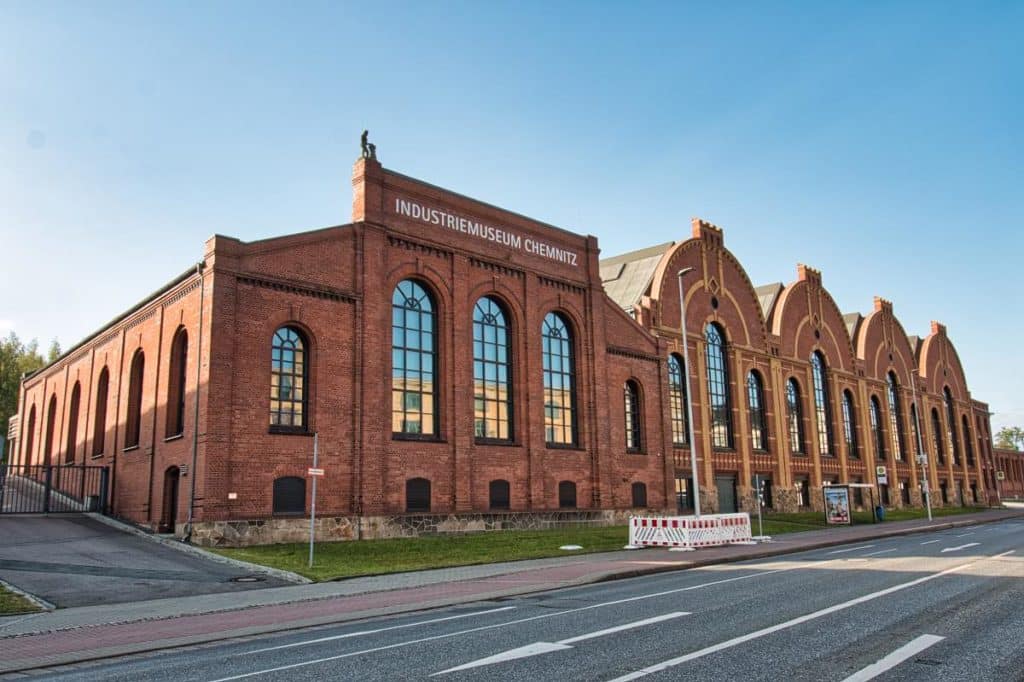
Industrial Museum
The Industrial Museum is one of the best museums on industrial culture in Germany. In the exhibition in the former iron foundry you can learn everything about the development of Chemnitz into the “Saxon Manchester”, as it was often referred to. You can see important machines and find out all about the leading figures of the industrial revolution in Saxony and Germany. The people of Chemnitz are particularly proud of the locomotive manufacturer Richard Hartmann. After his factory in Chemnitz, he even founded a factory in Luhansk, which today belongs to Ukraine, in 1896. The locomotive factory was later one of the most important in the entire Soviet Union.
Important Information Adress: Zwickauer Str. 119, 09112 Chemnitz Link to Google Maps: Link Website: Link
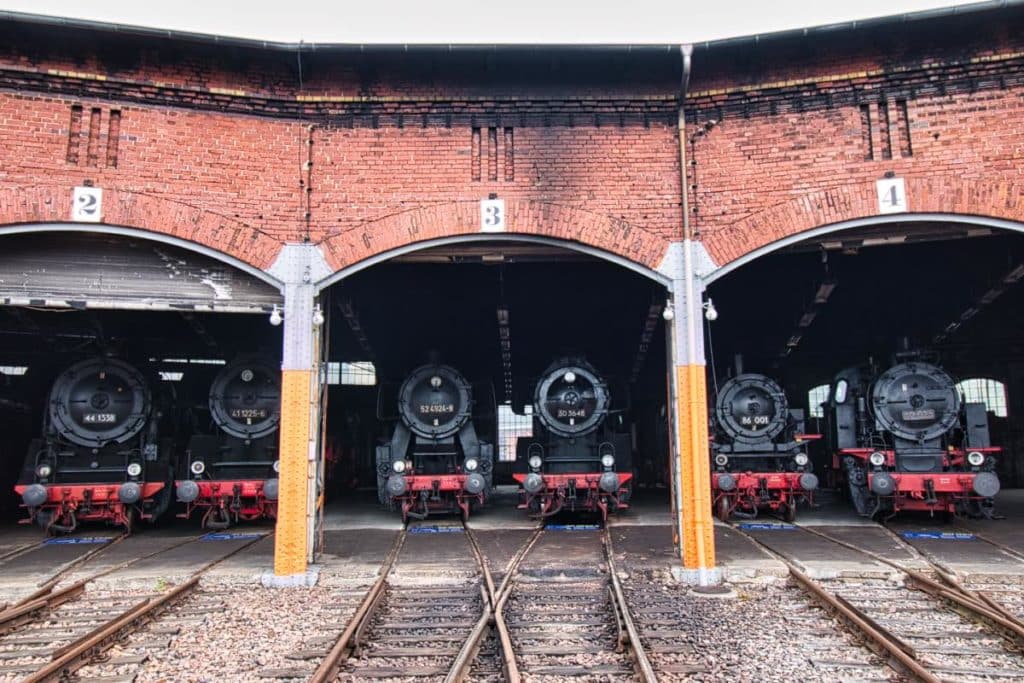
Saxon Railway Museum
You can admire some of the most beautiful steam locomotives developed by Richard Hartmann at the Saxon Railway Museum in Chemnitz. Here you can see dozens of old steam engines and GDR locomotives such as the Ludmilla or the express train VT 18.16. You can explore the former depot on your own. The locomotives offer great photo opportunities and the museum is one of the best Chemnitz sights for that reason alone. You can spend a few hours here and take your time looking at everything.
Important Information Adress: An der Dresdner Bahnlinie 130c, 09131 Chemnitz Link to Google Maps: Link Website: Link
Chemnitz Germany sights outside the city – Klaffenbach moated castle
At Klaffenbach Water Castle the city of modernity shows itself from a completely different side. Chemnitz can also be romantic. For this reason alone, the Klaffenbach Water Castle is one of our top 10 Chemnitz sights. The 16th century castle is surrounded by water. The roof gables are reminiscent of inverted ship hulls. It is certainly a beautiful backdrop, especially for your couple’s photo. And if you get romantic feelings on the spot, you can even get married here.
No products found.
No products found.
No products found.
No products found.

